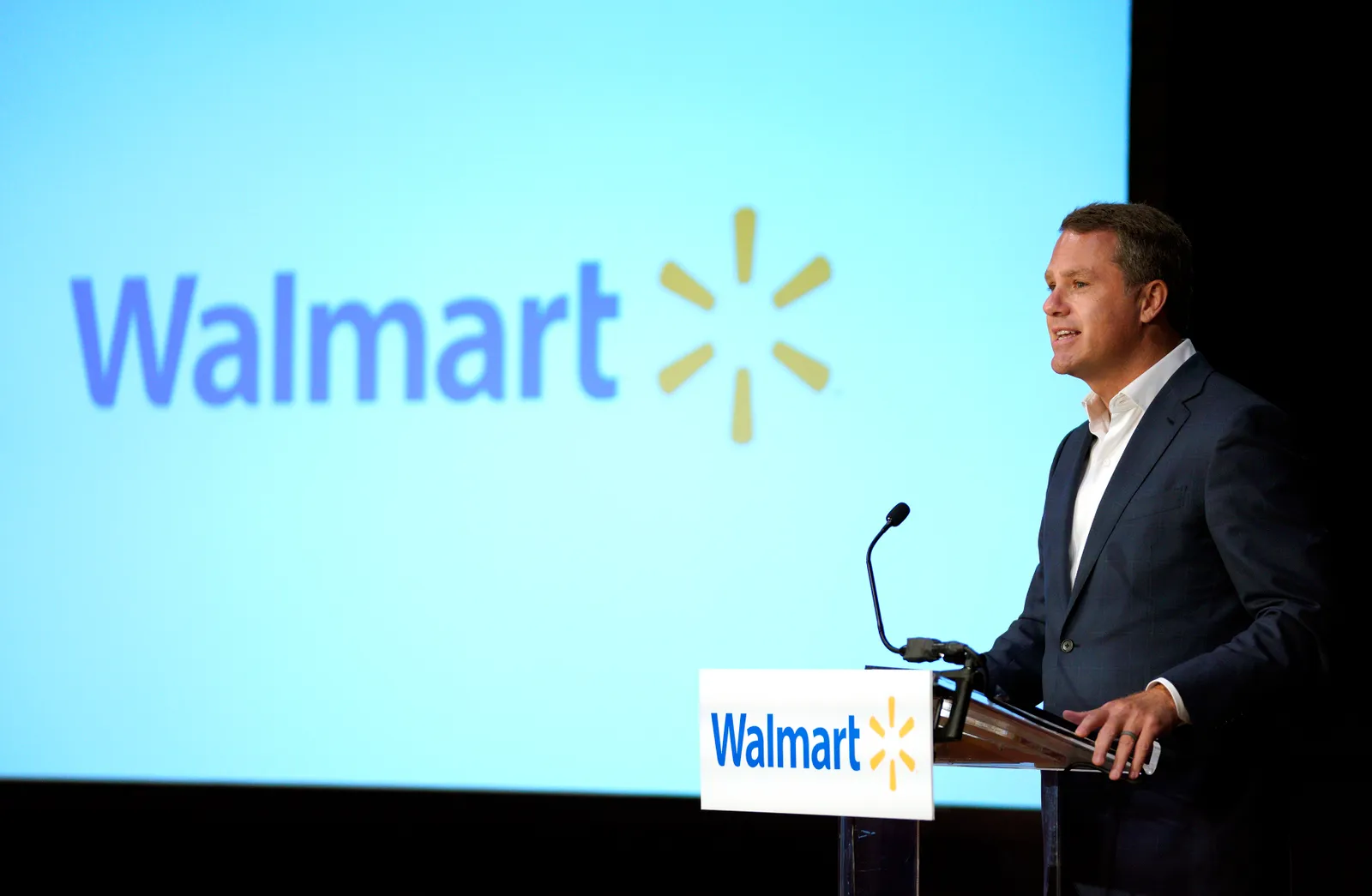As Walmart’s business model evolves, a focus on omnichannel strategy is the thread tying together its e-commerce business, fulfillment services, advertising and more, Walmart President and CEO Doug McMillon said at Morgan Stanley’s Global Consumer & Retail Conference on Wednesday.
Walmart hasn’t been shy about touting its omnichannel efforts and why catering to meet shoppers’ needs across in-store and online channels can boost profitability.
“We’ve shared before — if people buy in-store and online with Walmart.com, they generally spend twice as much and they shop in-store more often,” McMillon said. The retailer giant is “very excited” about automation as it builds out its e-commerce fulfillment, McMillion added.
McMillon’s sit down with Morgan Stanley Analyst Simeon Gutman provided more details into the role automation plays, which fulfillment methods the retailer is relying on and how e-commerce connects to its alternative income streams and overall profits.
High-tech supply chain
McMillon said his confidence in Walmart growing its top-and bottom-line growth is partly driven by the chance to improve productivity through automation, particularly with its supply chain.
“There's more in front of us to do with the supply chain in particular and we're very excited about automation. And I think it's going to really help our store associates and help us with productivity,” McMillon said.
He continued: “Specifically, what we're seeing is — after a number of years of work — there are opportunities to use automated storage and retrieval systems in ambient distribution centers, food distribution centers, e-commerce fulfillment centers and eventually market fulfillment centers next to stores.”
Automation can create customized e-commerce orders for customers or as department- and store-specific pallets, McMillon said. In the U.S., the retailer already receives grocery products on pallets, which make freight handling easier. Now, the retailer wants to use that model for general merchandise and enable stocking from the pallet, he said.
“It's a different process, eliminating a lot of the hours that we invest in today in the back room of our stores,” he said.
Walmart is turning to automation to not only boost productivity but also to help reduce labor costs. “One of the biggest costs that we have in our e-commerce businesses is for store-level wage investments to pick orders,” McMillon said.
McMillon said Walmart is working with four different partners on the four types of fulfillment centers. As Walmart has layered on those different types of fulfillment centers, starting with ambient and then adding food and e-commerce with different operating systems, the retailer has worked to sync them together and optimize inventory. Data and algorithm improvements and robotics with its supply chain are allowing for better demand forecasting, allowing for new ways to reduce costs, McMillon said.
Walmart has also focused on outfitting its existing distribution centers with automated storage and retrieval systems to avoid having to build more facilities, McMillon added.
In some cases, the retailer is choosing to add new facilities where they’re needed, including a recently opened one in Chicago — the first of four high-tech fulfillment centers Walmart is building over the next three years.
“There's not a lot of human engagement with that product,” McMillon said about the Chicago facility. “There's still some, which eventually we'll work through to an even greater degree, but it is really slick and also more accurate.”
Walmart is also using store-level fulfillment in other cases, leveraging the last-mile advantage of store locations near customers and carving out space for micro-fulfillment centers (MFC) while retaining in-person shopping, McMillon said.
This fall, the retailer bought MFC developer Alert Innovation, following work on a multi-year pilot of the company’s robotic grocery order-fulfillment technology, known as Alphabot. Walmart Chief Financial Officer John David Rainey told investors during its third-quarter earnings call that the retailer is expanding its buildout of MFCs that are attached to or inside its supercenters.

Evolving business model
The multi-year investment in revamping its supply chain is happening in tandem with changes to the retailer’s business model to focus more on omnichannel strategy, McMillon said.
Walmart has long focused on its stores. But as the retailer built up its e-commerce business, in-store and online shopping felt siloed as recently as last year, McMillon said. Through organizational structure changes, the retailer has achieved a more seamless shopping experience by doing away with channels, McMillon said.
The company is using income from its fulfillment services, advertising and Walmart+ membership to help support its investments in areas that are not yet profitable, while also running its retail business, McMillon said. Among its alternative businesses, Walmart’s marketplace is the top priority due marketplace seller fees and its connection to the retailer’s fulfillment and advertising offerings, he said.
Building out digital relationships with customers can help the retailer steer people toward its Walmart+ memberships.
“The primary reason why someone would want to become a Walmart+ member is for free delivery and our food
and consumables customer value proposition is attractive. ... Our challenge is to take that frequently purchased set of items in that relationship and have it extend into more discretionary items and build the basket out over time,” McMillon said.
Ultimately, Walmart can “see all the pieces” of the technologies it’s leveraging adding up to a profitable model, McMillon said.
So far, the work appears to be paying off: For its U.S. business, Walmart recorded e-commerce sales growth of 16% and 12% in its third and second quarters of fiscal year 2023, respectively — a jump from the 1% increase it recorded in its first quarter.
“Now, I think we are truly an omnichannel retailer,” he said.















